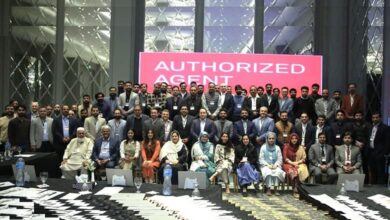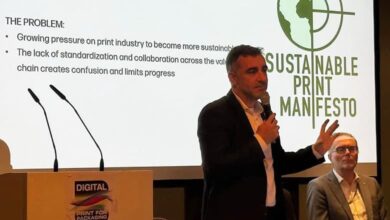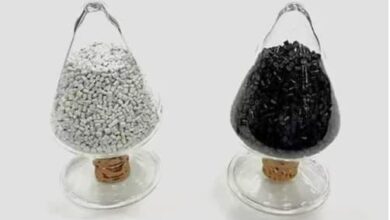Augmented Reality Makes Print Interactive

ME Printer speaks to Christian Kiesewetter, the Head of Operations and Project Delivery Business Innovation Centre at Konica Minolta Business Solutions Europe, about the opportunities Augmented Reality brings along for the print industry
AR makes print interactive. In such a scenario what are the opportunities for those that choose to invest in such a technology?
AR is about showing information in the context of a physical object – so all we are talking about is bridging the on- and offline world and meeting the needs of today’s customers.
A few examples:
- Advertising sales, AR opens a whole new market for advertisers to get their brand to the consumer in a new way.
- Thinking along the lines of recipes and ‘how-to’s’ AR removes many steps from the process.
- Thinking about training environments, people can consume training content in new ways i.e. see videos, interact with quizzes etc.
This leads to competitive advantages of those investing into AR because they can generate a more immersive experience in a real world environment. In addition built-in analytics allow – for the very first time – to really “measure” the impact of a printed campaign.
So Augmented Reality enables expanded content and direct interaction with the customer. It is a successful response to our increasingly interconnected world, allowing to deliver a greater variety of creative prints, labels and packaging.
What is the use and purpose of AR in the printing and packaging sector?
Print has always limitations – with high quality print you are able to get attention of people but the content is always “static” and typically space is limited. AR can help in making print interactive with linking digital content with a real world object, you can make it interactive and open a two-sided communication channel and you are not restricted by the size of a label or the number of pages of a printed product.
Reduction in packaging costs as AR can potentially negate the need for so much information on the package. Visualizing information of the product in its context – a few examples:
- where was it produced
- who produced it (storytelling par excellence … adds a personal touch)
- in case of food: what are the ingredients
- in case of food: story around calories and health
- what is the CO2 footprint
- which way did a package go (tracking)
- any kind of gamification (scratch and win, collect points -> use points as credits for the next buy, collect credits for buying healthy or CO2 friendly products … the healthier/friendlier the more points you get)
Especially for FMCG or similar goods: these companies are lacking direct access to their customers who are buying their goods, they typically need retail stores or similar. With AR they have the opportunity of offering information, loyalty programs, sweepstakes, vouchers, … without involving retailers as this is linked to the context of the product itself.
How can companies create a competitive advantage and bringing in new revenue using AR?
Although AR itself is not really new it still is and “feels” fairly young and fresh and has the wow factor to attract new and existing users and when the AR content provides the right value it will further attract repeat usage.
AR offers new opportunities for print houses to add new revenue streams. Without the necessity of becoming a digital agency they are now able in offering additional services which are directly linked to their core business.
Two examples:
- A label printer can now offer way more opportunities of presenting information to consumers.
- Mail houses or letter shops have already started to offer printing services and become a one-stop-shop for direct mailing. With AR they can now offer additional services to their customers and become the “trusted advisor” for their customers.
The low entry point for Direct Mail houses enables them to move closer from printer only to agency like services. So it helps them on their transformation of a print house which is typically challenged with high competition on pricing – whereas adding new opportunities (like finishing, AR, and so on) really offers the opportunity to stand out on the market.
How can companies get equipped in order to fulfill those specialty print jobs using AR?
Mastering the technology itself can be done in a few hours – but to be really successful it needs more: AR needs to be in thought process when creating a specialty print job and not an afterthought. As an example questions like the following need to be addressed to name a few:
- How do I communicate that a print is interactive?
- What content should be provided?
- How do I add an extra benefit to AR?
All of this is no rocket science but it needs some creativity and the willingness to try out things. The content itself can be changed and adopted without the need of doing reprints or anything similar – so the investment is really small. But there needs to be an understanding of how the final printed product (no matter if it is a book, a brochure or a label) is used how the consumers of these products are using it and what they expect to do.
How can companies make sure they deliver a truly immersive experience?
AR itself is just a different “channel” to communicate with people – so typically you have the advantage at the very beginning of a costumer (or reader) journey, because AR triggers still a “wow effect”. But then you need to think how people use it twice, which information they can find, and so on.
So all in all, it’s about content – very similar to any other marketing tool – about telling a personal story that catches the attention and adding value either to the original print which triggers the AR content or for the user consuming the data (like exclusive content, chance to win, additional information, and so on). Using AR just for additional advertising alone will not bring repeat usage – the AR experience has to be well informed and printed content and the experience itself needs to be intuitive.
Does your company offer products that cater to the AR segment?
Konica Minolta has launched end of 2018 it’s AR product genARate which is – for the first time – covering the needs of the print and packaging industry to make use of AR. Since decades we are trusted partner in the field of offering print services and now we are using this expertise we have gained to offer a one-stop-solution for AR. You don’t need to be a programmer or a designer to be able to create AR content. You don’t need to set-up up any IT infrastructure – all you need is a web browser and the willingness to expand your business.
What sort of impact will AR have on the collective printing and packaging industry?
If done properly AR has the power to be a complete game changer for the printing and packaging industry. This is true for the buying experience in a shop but also for engaging with the product when being at home. It will help to understand better the content of a book or help the consumer handling a product.
We will get to a stage where consumers are expecting 2D content to be augmentable – other industries are already showing great success with using AR. So it’s the right time right now to start engaging with readers and consumers right now.






55 Comments